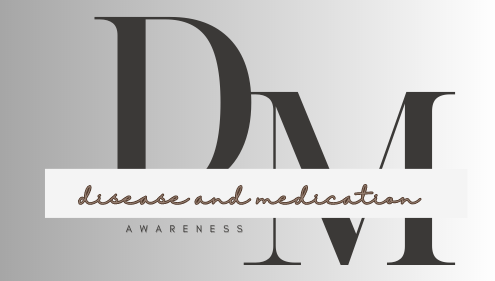What is Stiff Person Syndrome (SPS)?
Stiff Person Syndrome (SPS), also known as stiff-man syndrome, is a rare neurological disease characterized by progressive muscle stiffness and spasms. It typically manifests in adulthood and affects people, though there is a slight predominance in women. The symptoms and underlying causes of SPS are complex, leading to significant disability and impacting quality of life.
Causes of Stiff Person Syndrome (SPS)
SPS is considered an autoimmune disorder, where the body’s immune system mistakenly attacks its own cells. Specifically, SPS is often associated with antibodies against glutamic acid decarboxylase (GAD), an enzyme involved in synthesizing gamma-aminobutyric acid (GABA),a key inhibitory neurotransmitter in the central nervous system. This disruption in GABA production leads to muscle stiffness and spasms.
However, not all cases of SPS involve GAD antibodies; there are other variants with different autoimmune targets, such as amphiphysin or glycine receptors. This variability suggests that SPS is a spectrum of related disorders with different underlying mechanisms.
Early Signs of Stiff Person Syndrome (SPS)
The hallmark symptoms of SPS include:
- Muscle Stiffness: Affected individuals experience persistent or episodic muscle stiffness, primarily in the trunk and proximal limbs. This stiffness can lead to abnormal postures and difficulty walking.
- Painful Muscle Spasms: These spasms can be triggered by sudden noises, emotional stress, or physical touch. They are often intense and may cause significant pain.
- Postural Instability: Due to the muscle stiffness and spasms, individuals with SPS may have difficulty maintaining balance, increasing the risk of falls.
As the disease progresses, symptoms can worsen, leading to increased disability. Some patients may require assistive devices, such as canes or wheelchairs, to maintain mobility.

Stiff Person Syndrome: How To Diagnose?
Diagnosing SPS can be challenging due to its rarity and variability in presentation. The diagnostic process typically involves:
- Clinical Evaluation: A thorough assessment of symptoms and medical history.
- Antibody Testing: Testing for GAD antibodies or other relevant autoimmune markers. This is a key diagnostic tool for SPS.
- Electromyography (EMG): EMG tests can detect continuous muscle activity, which is a characteristic feature of SPS.
Due to the overlap of symptoms with other neurological disorders, accurate diagnosis is essential to ensure appropriate treatment.
Treatment For Stiff Person Syndrome
Treatment for SPS aims to manage symptoms and improve quality of life. Common approaches include:
- Medication: Benzodiazepines (such as diazepam) are often used to reduce muscle stiffness and spasms. Baclofen, a muscle relaxant, may also be prescribed. In some cases, immunosuppressive therapy, such as intravenous immunoglobulin (IVIG), may be used to modulate the autoimmune response.
- Physical Therapy: Physical therapy can help maintain mobility, improve posture, and reduce the risk of falls.
- Occupational Therapy: This therapy focuses on adapting daily activities to accommodate muscle stiffness and spasms.
- Emotional Support: Given the stress and anxiety that SPS can cause, psychological support or counseling may be beneficial.
Prognosis
SPS is a chronic illness, and there is no known cure. However, with proper management, many individuals with SPS can achieve a reasonable quality of life. The disease’s progression varies among patients, with some experiencing periods of stability, while others may see a gradual worsening of symptoms.
How Is Stiff Person Syndrome Different From ALS?
Stiff Person Syndrome (SPS) and Amyotrophic Lateral Sclerosis (ALS) are distinct neurological disorders. SPS is an autoimmune condition characterized by muscle stiffness and spasms due to antibodies targeting components of the nervous system, primarily glutamic acid decarboxylase (GAD). ALS is a neurodegenerative disease leading to progressive muscle weakness, atrophy, and paralysis due to the loss of motor neurons in the brain and spinal cord. SPS progresses slowly with periods of stability, while ALS is more rapidly progressive, usually leading to respiratory failure within a few years. Treatment for SPS focuses on managing muscle stiffness with medication and therapy, whereas ALS treatment aims to slow disease progression and support functions like breathing and mobility.
Stiff Person Syndrome vs. ALS: Key Differences
Stiff Person Syndrome (SPS) and Amyotrophic Lateral Sclerosis (ALS) are both neurodegenerative diseases that affect the motor neurons, leading to muscle weakness and stiffness. However, there are several key differences between these two conditions:
1. Primary Affected Muscles:
- SPS: Primarily affects the axial muscles, including the trunk, neck, and shoulders.
- ALS: Primarily affects the limbs, hands, and feet.
2. Muscle Tone:
- SPS: Characterized by increased muscle tone (spasticity) and painful muscle spasms.
- ALS: Characterized by muscle weakness and atrophy (muscle wasting).
3. Progression:
- SPS: Progression can be variable, with periods of remission and exacerbation.
- ALS: Typically progresses rapidly, leading to paralysis and death within a few years.
4. Causes:
- SPS: The exact cause is unknown, but it is believed to be an autoimmune disorder.
- ALS: The exact cause is unknown, but it is believed to be a combination of genetic and environmental factors.
5. Treatment:
- SPS: Treatment often involves medications to manage muscle spasms and pain.
- ALS: There is no cure for ALS, but treatment can help manage symptoms and improve quality of life.
It’s important to note that while SPS and ALS share some similarities, they are distinct conditions with different symptoms, causes, and treatments. If you are experiencing symptoms of muscle weakness, stiffness, or spasms, it’s important to consult with a healthcare professional for a proper diagnosis.

Conclusion
Stiff Person Syndrome is a rare and complex neurological disorder with significant physical and emotional impacts. The underlying autoimmune mechanisms, along with the unpredictable nature of symptoms, make it a challenging condition to manage. A multidisciplinary approach, involving neurologists, immunologists, physical therapists, and other healthcare professionals, is essential for optimal care.
